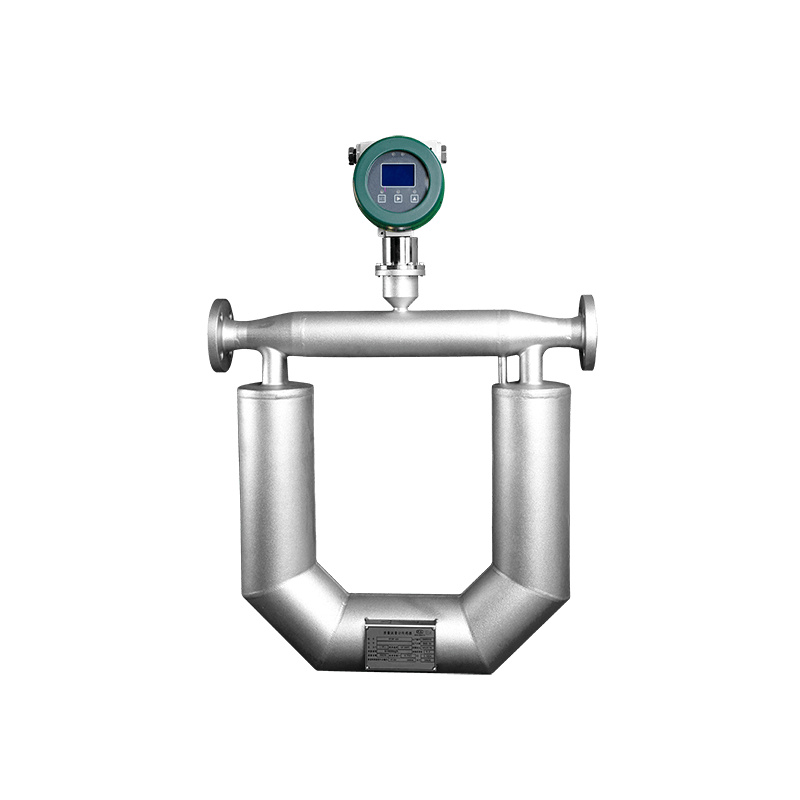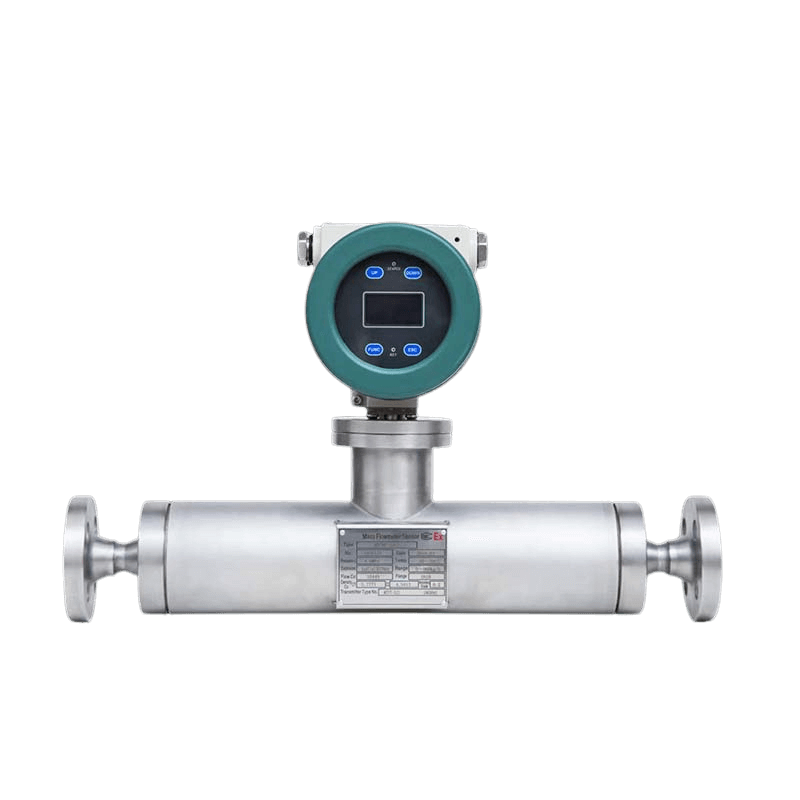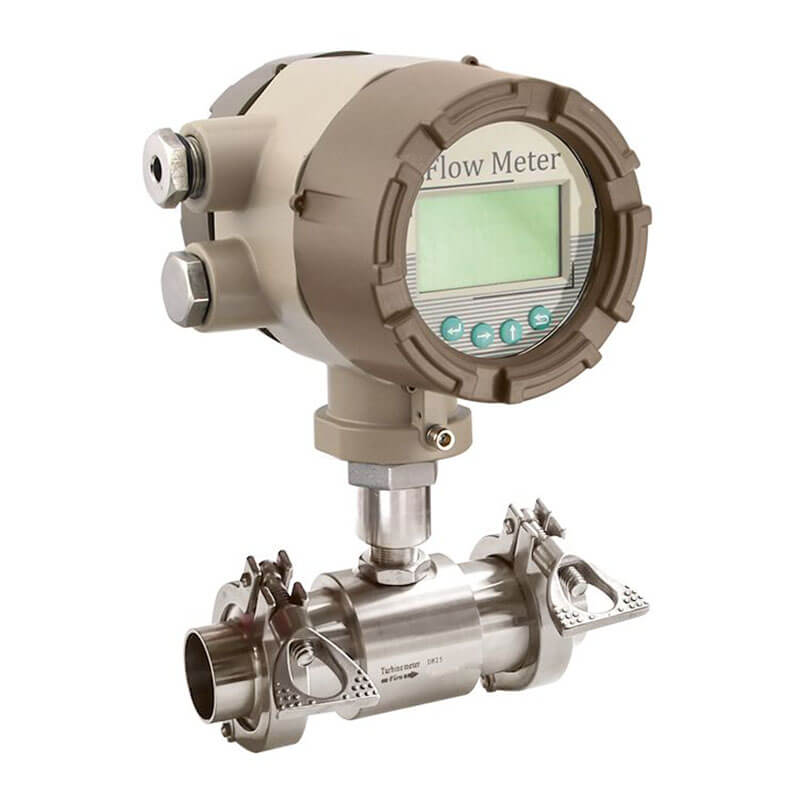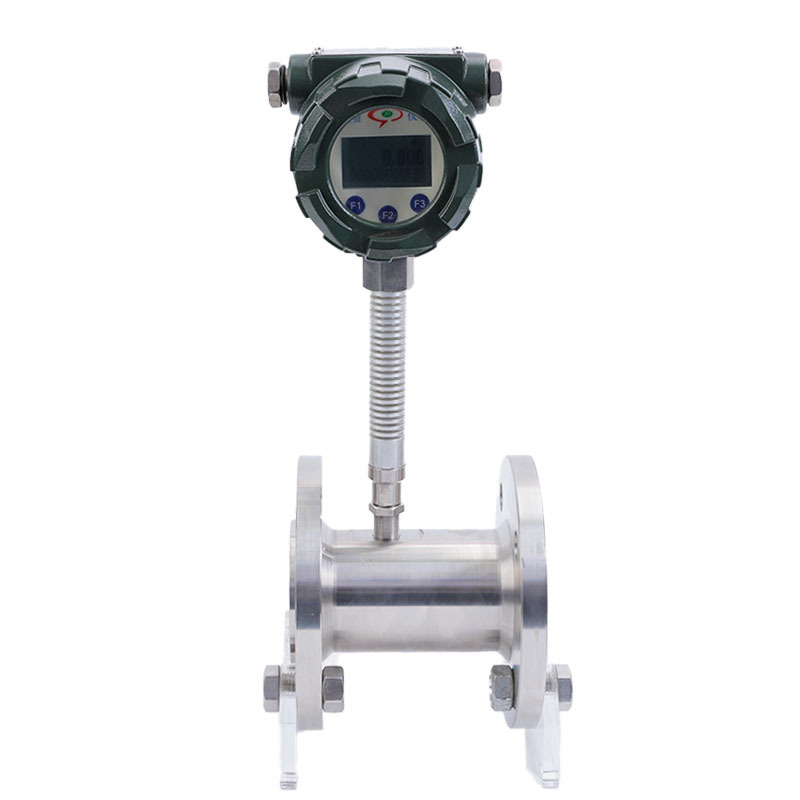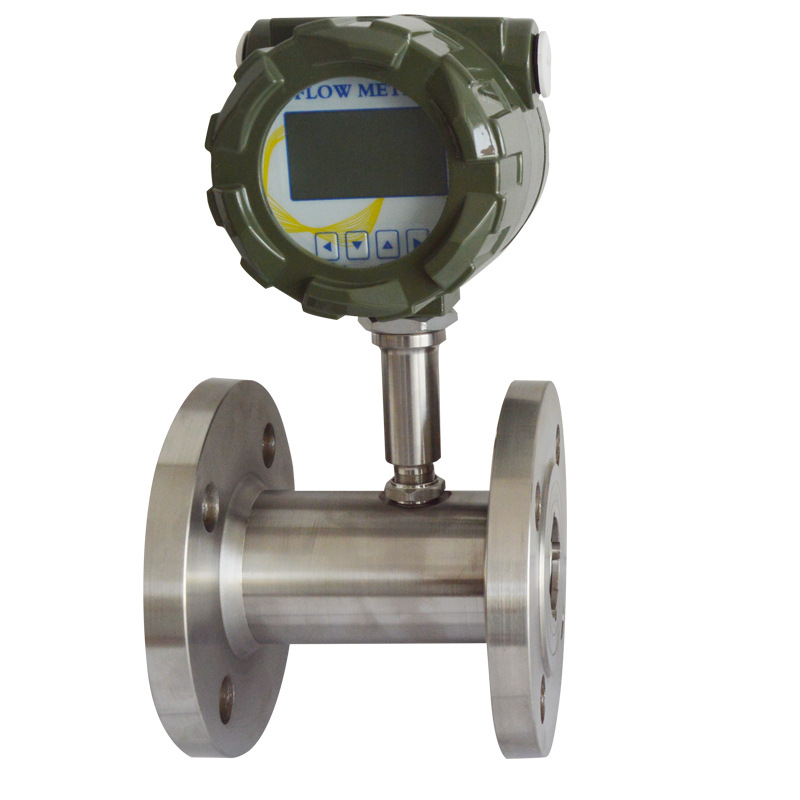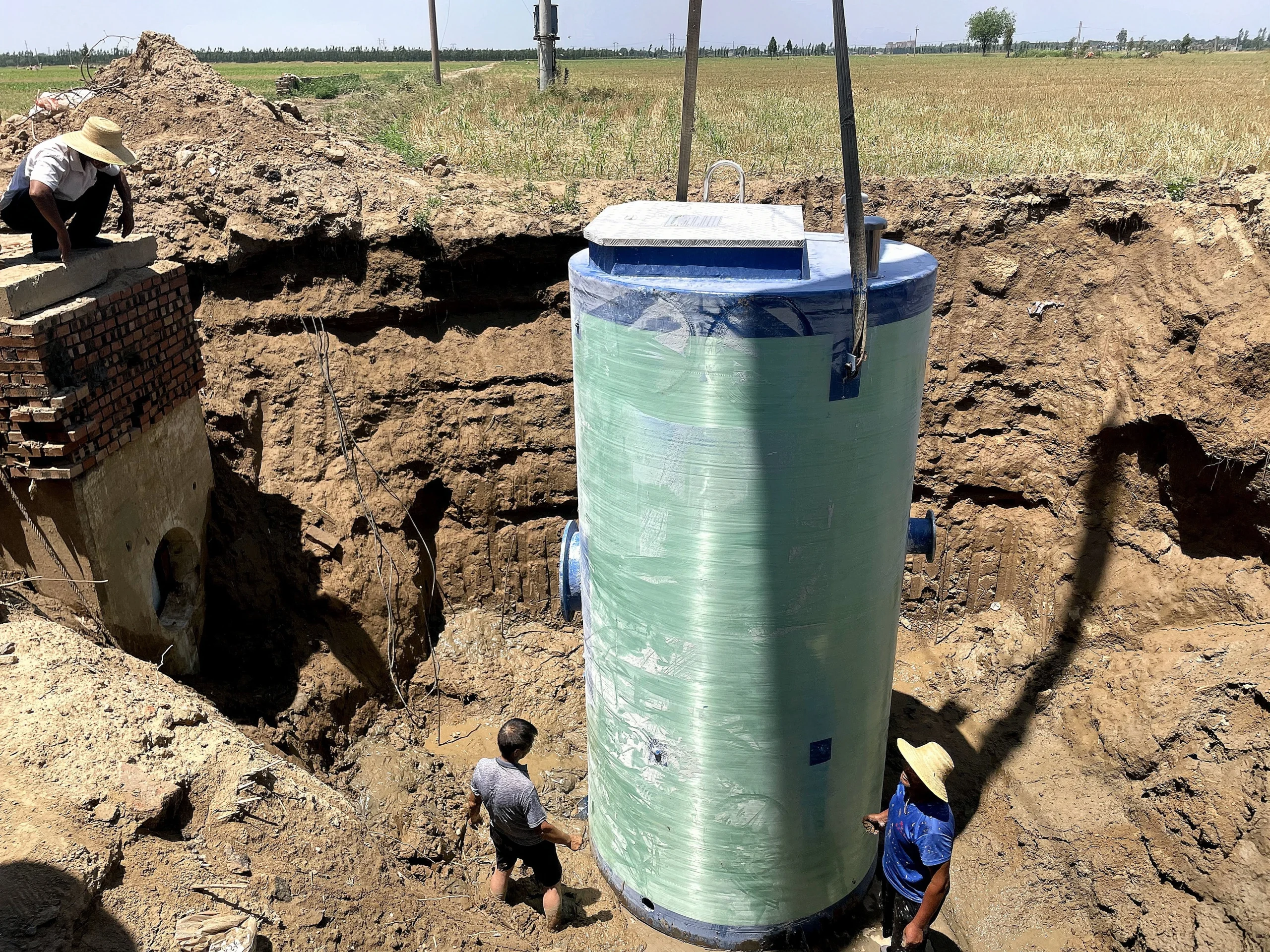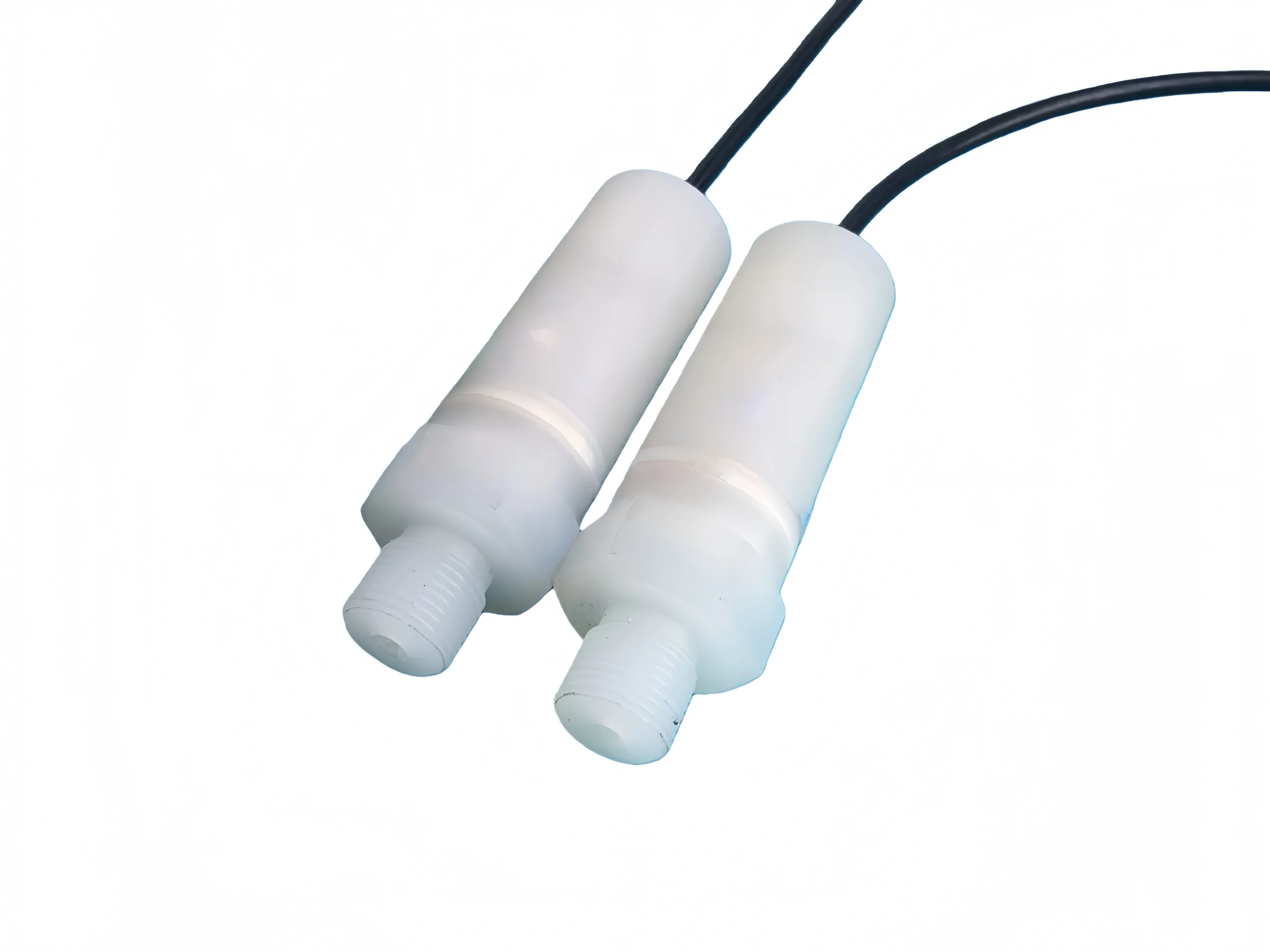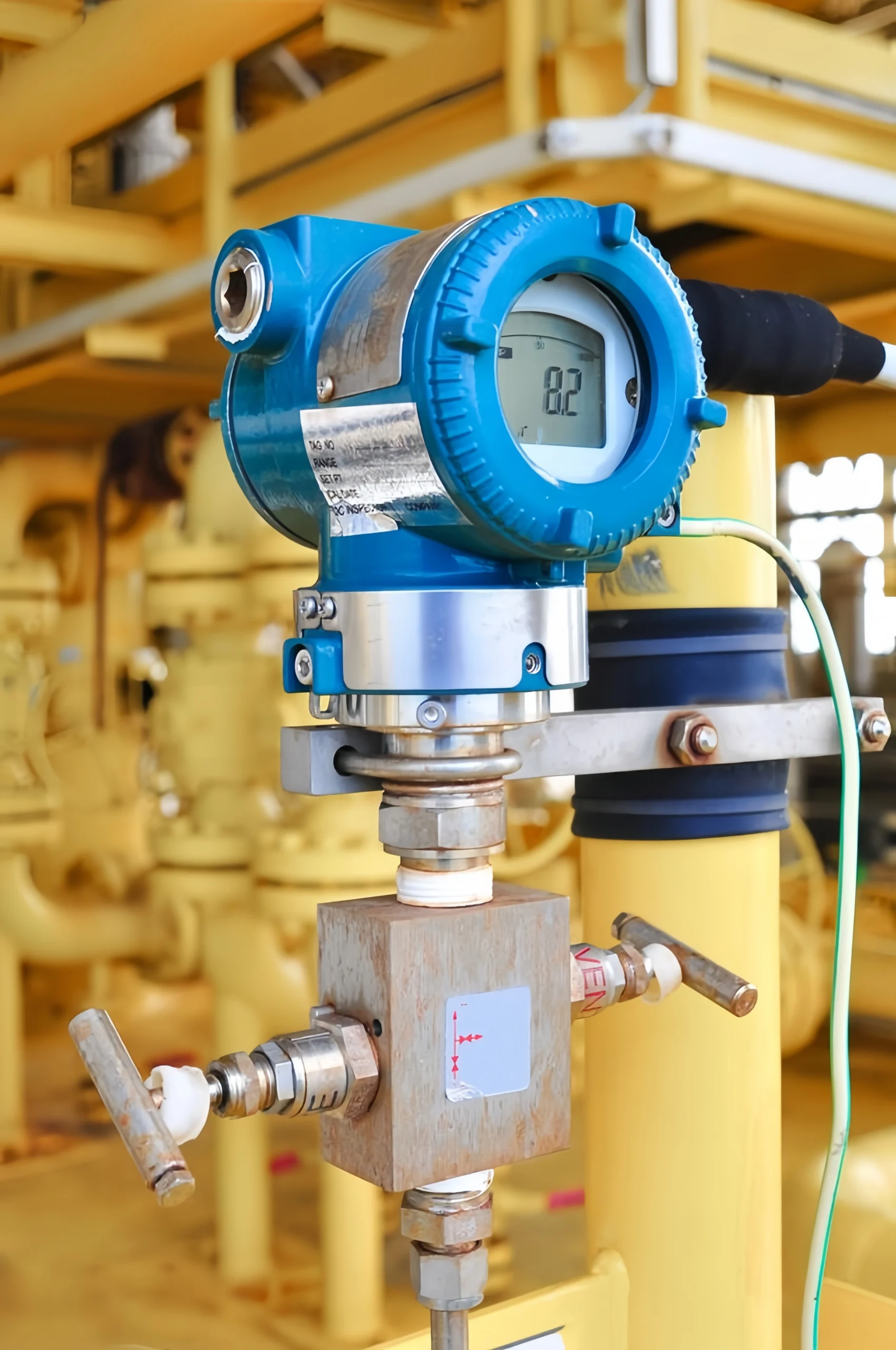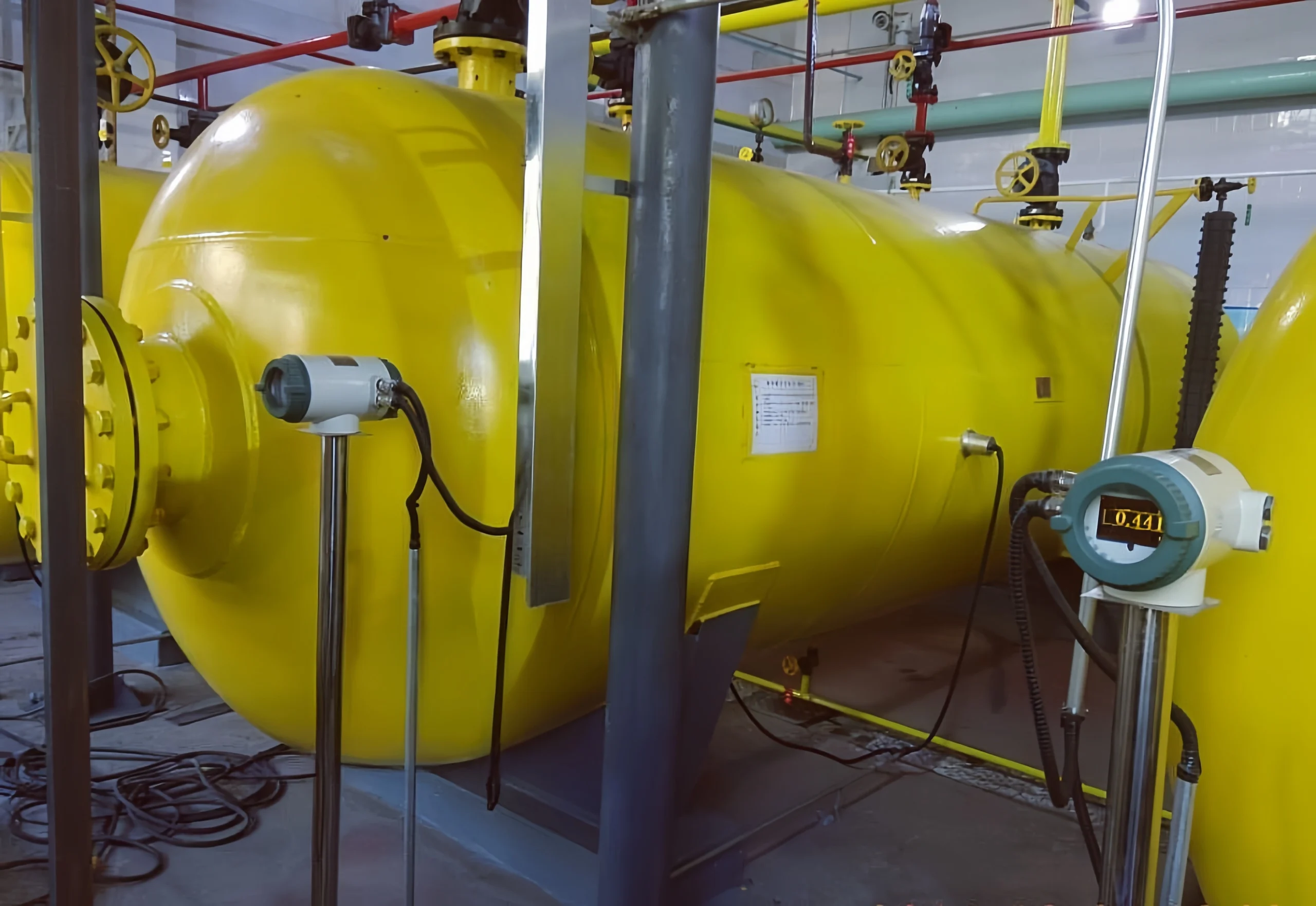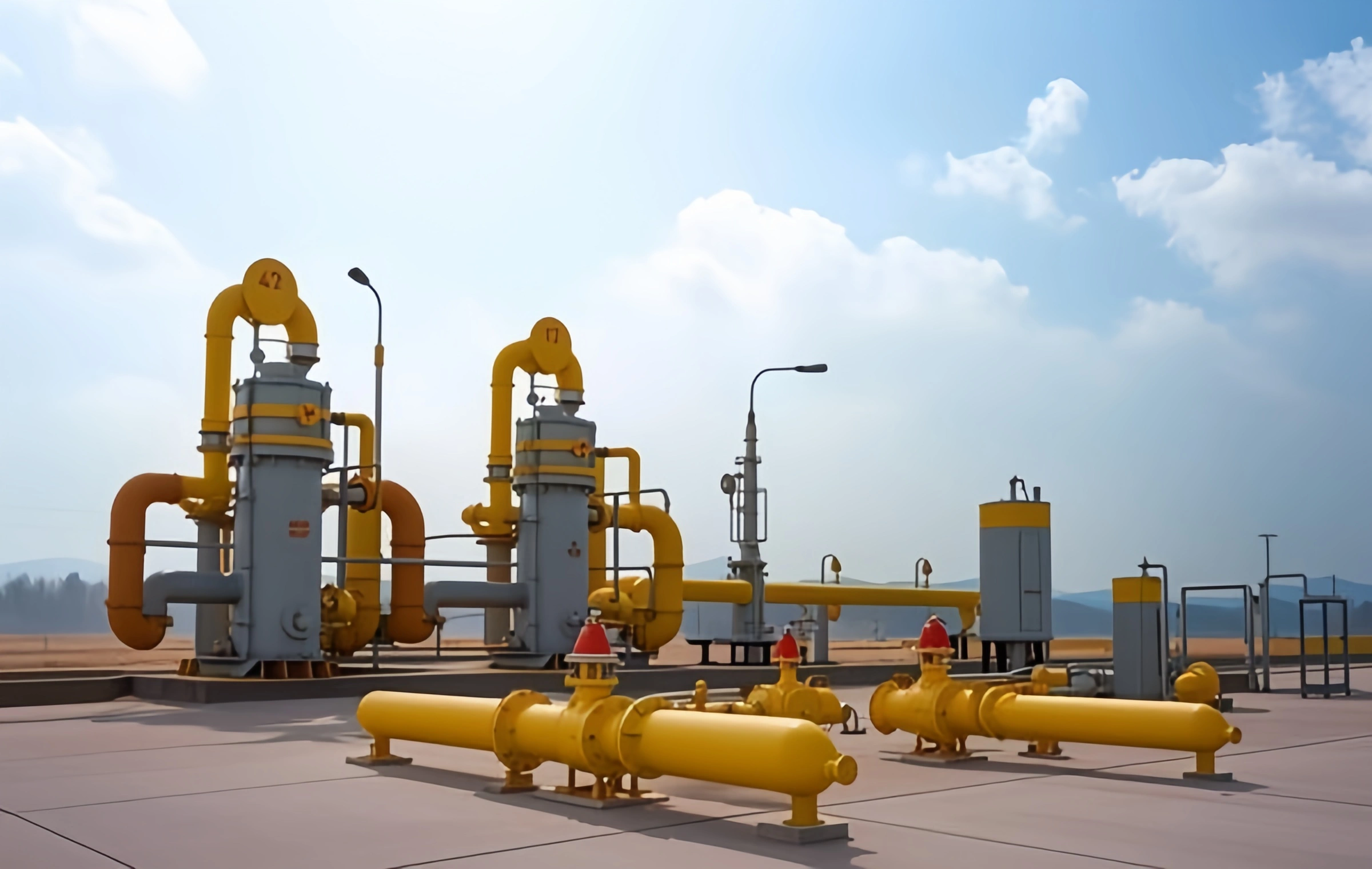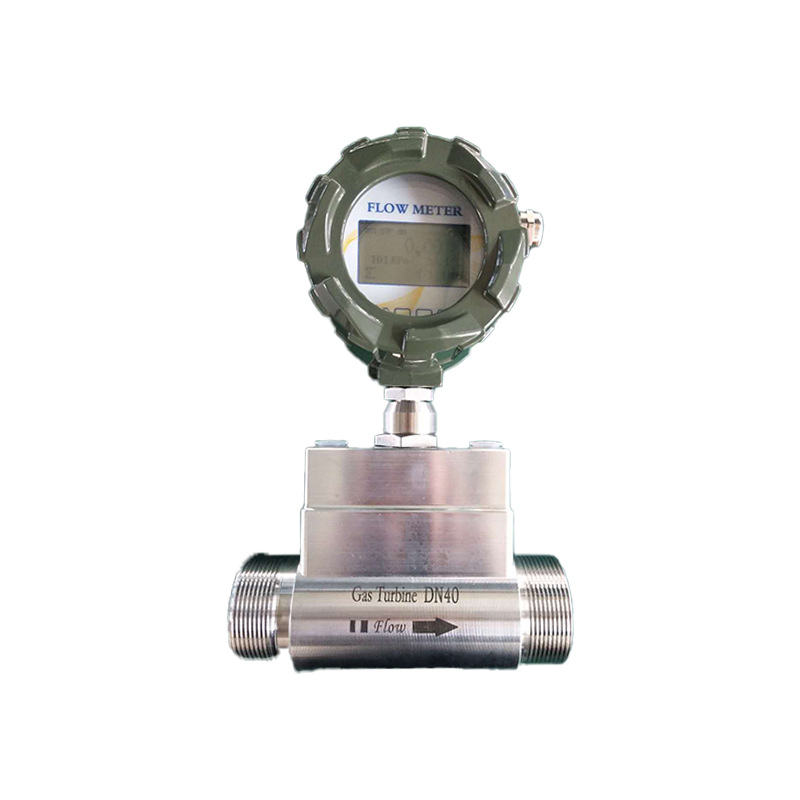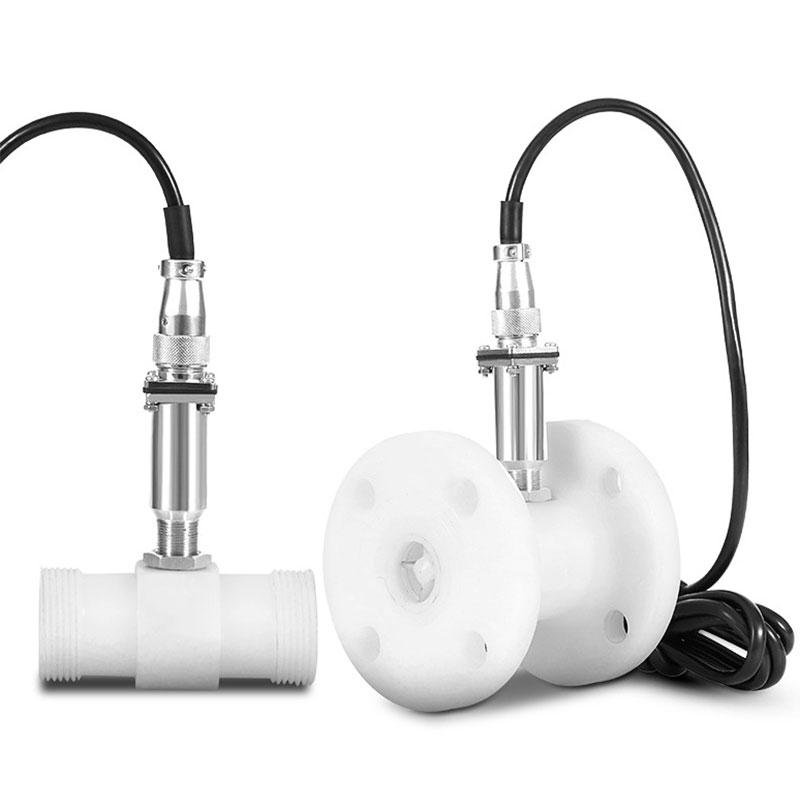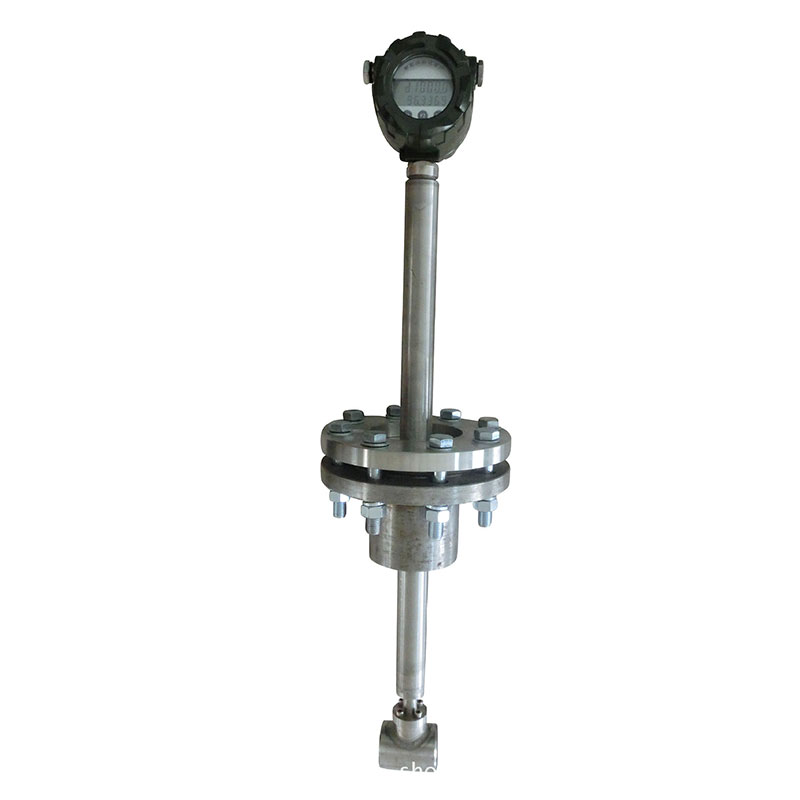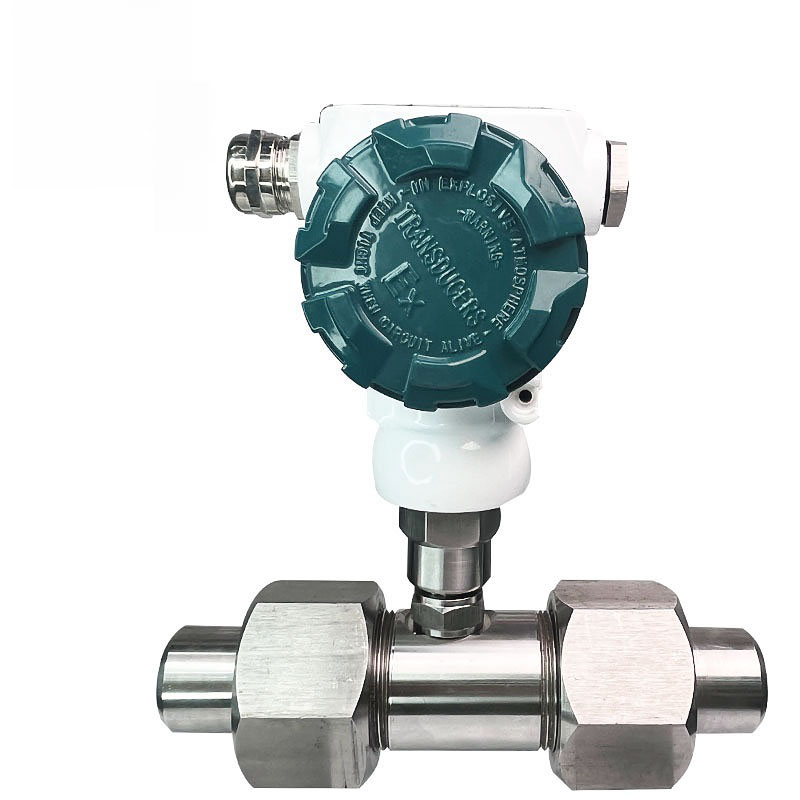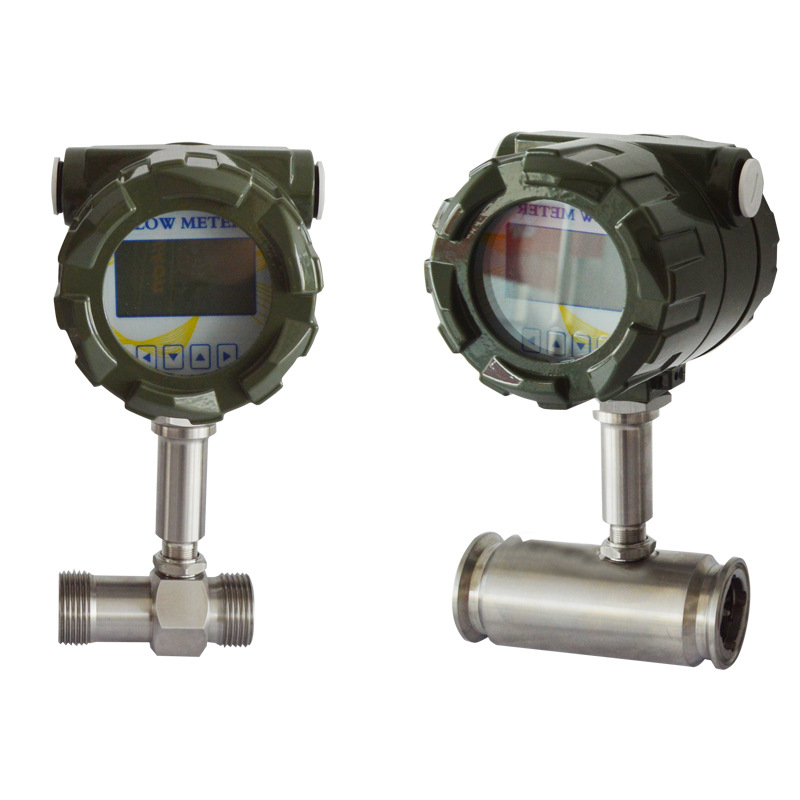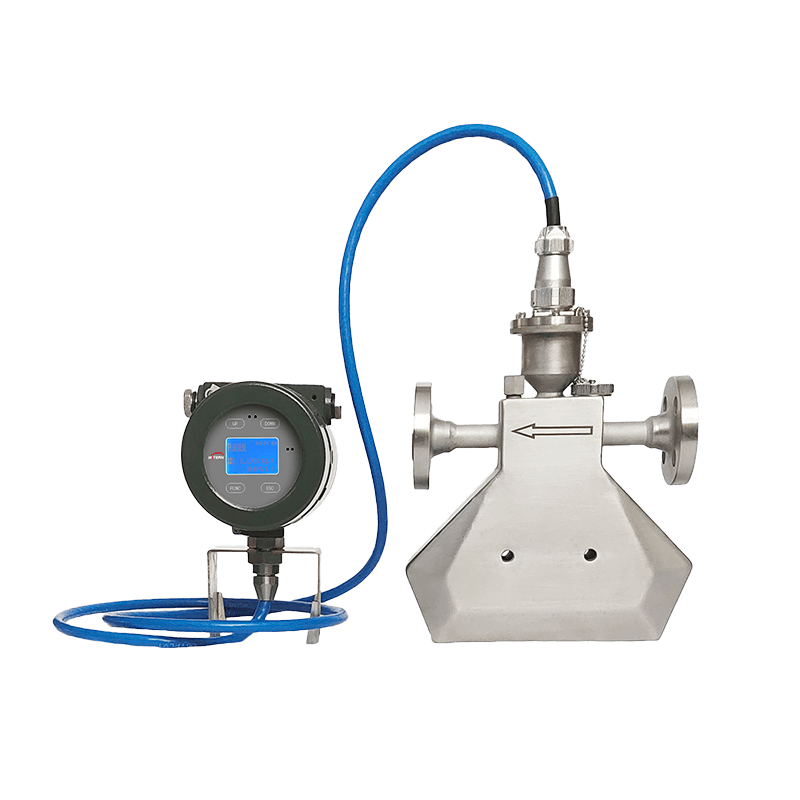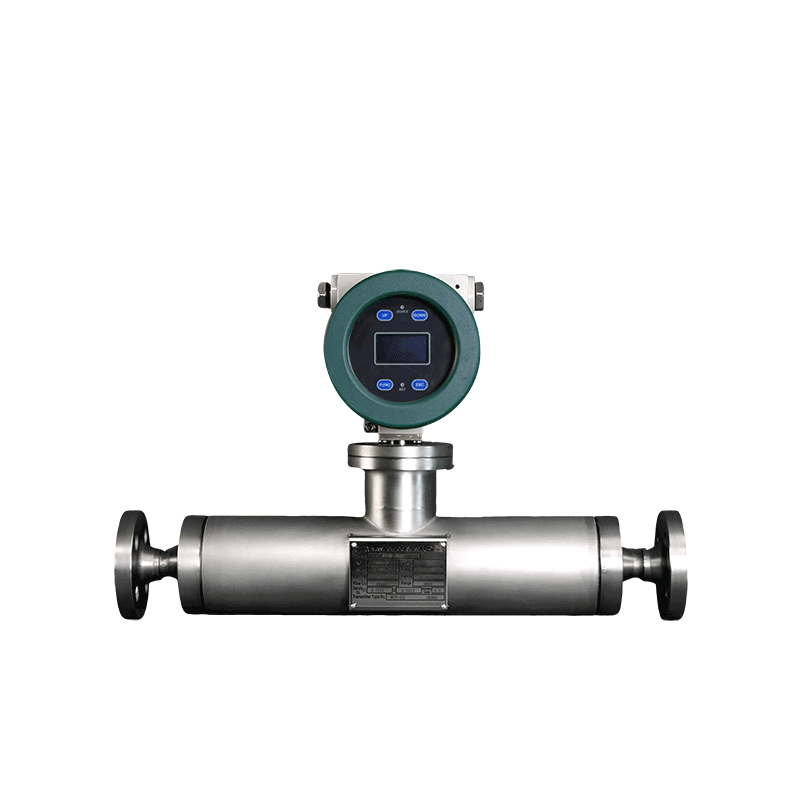Turbine flow meters and Coriolis mass flow meters are two different types of flow meters. Turbine Flow Meters measure volumetric flow. And if mass flow is to be measured, then an additional densitometer is required for conversion. Coriolis Mass Flow Meters measure the mass flow directly. It also measures the density and temperature of the medium.
These are the two biggest differences. But there is more to them than that, and I’ll go into more detail about the differences below.
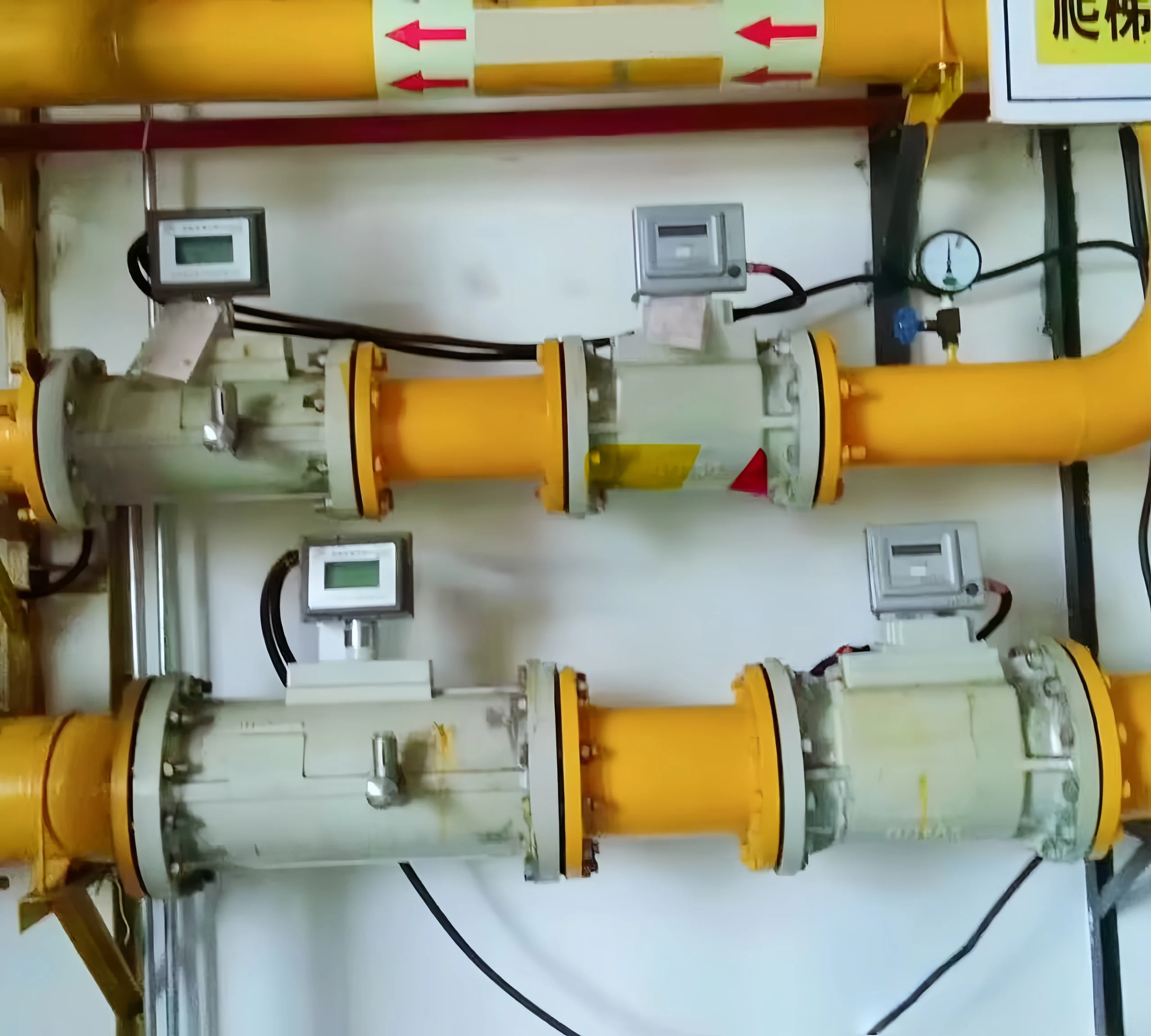
What is a Turbine Flow Meter
The working principle of a turbine flow meter is based on the relationship between the flow rate of a medium through a rotating turbine and the speed of the turbine. Turbine flow meters are widely used in petrochemical, metallurgical, gas, and many other industries.
Advantage:
- high accuracy
- good repeatability
- wide measuring range
- small pressure loss
- easy installation and maintenance.
Disadvantage:
- low coefficient of instrumentation
- low resolution
- applicable to low flow rate
- small diameter

What is a Coriolis Mass Flow Meter?
A Coriolis Mass Flow Meter utilizes the Coriolis effect principle to measure fluid mass flow. It is widely used in the chemical industry, electric power, petroleum, natural gas and other fields.
Advantage:
- Multi-parameter measurement
- Easy to adjust and use
- Wide range of measured media (paper, black pulp, slurry)
- High accuracy
Disadvantage:
- Sensitive to external vibration interference
- High cost
- Can not be used for larger pipe diameters
- The zero point is not stable
- The formation of zero drift.
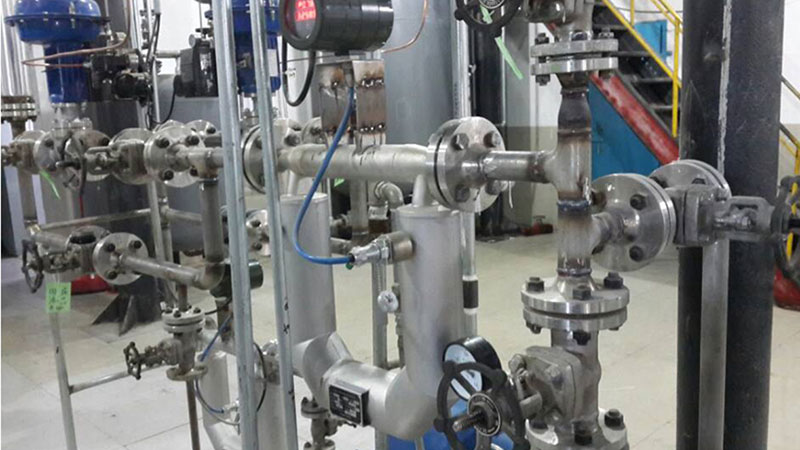
Sino-Inst Featured Product
What is the Difference between a Turbine Flow Meter and a Coriolis Mass Flow Meter?
Are you in the choice of a flow meter when you are entangled in the choice of a Turbine Flow Meter or a Coriolis Mass Flow Meter? Are you not clear about the principle of the two, the function of the two, and other issues? I believe you will have a clear answer after reading the following text.
Different Working Principle:
Turbine flow meters are also called velocity flow meters. When the measured fluid flows through the turbine flow meter sensor, under the action of the fluid, the impeller is forced to rotate. And its speed is proportional to the average flow rate of the pipeline. At the same time, the blades periodically cut the magnetic lines of force generated by the electromagnet, changing the magnetic flux of the coil. According to the principle of electromagnetic induction, an electrical pulsation signal will be induced in the coil. The frequency of this electrical pulsation signal is proportional to the flow rate of the measured fluid.
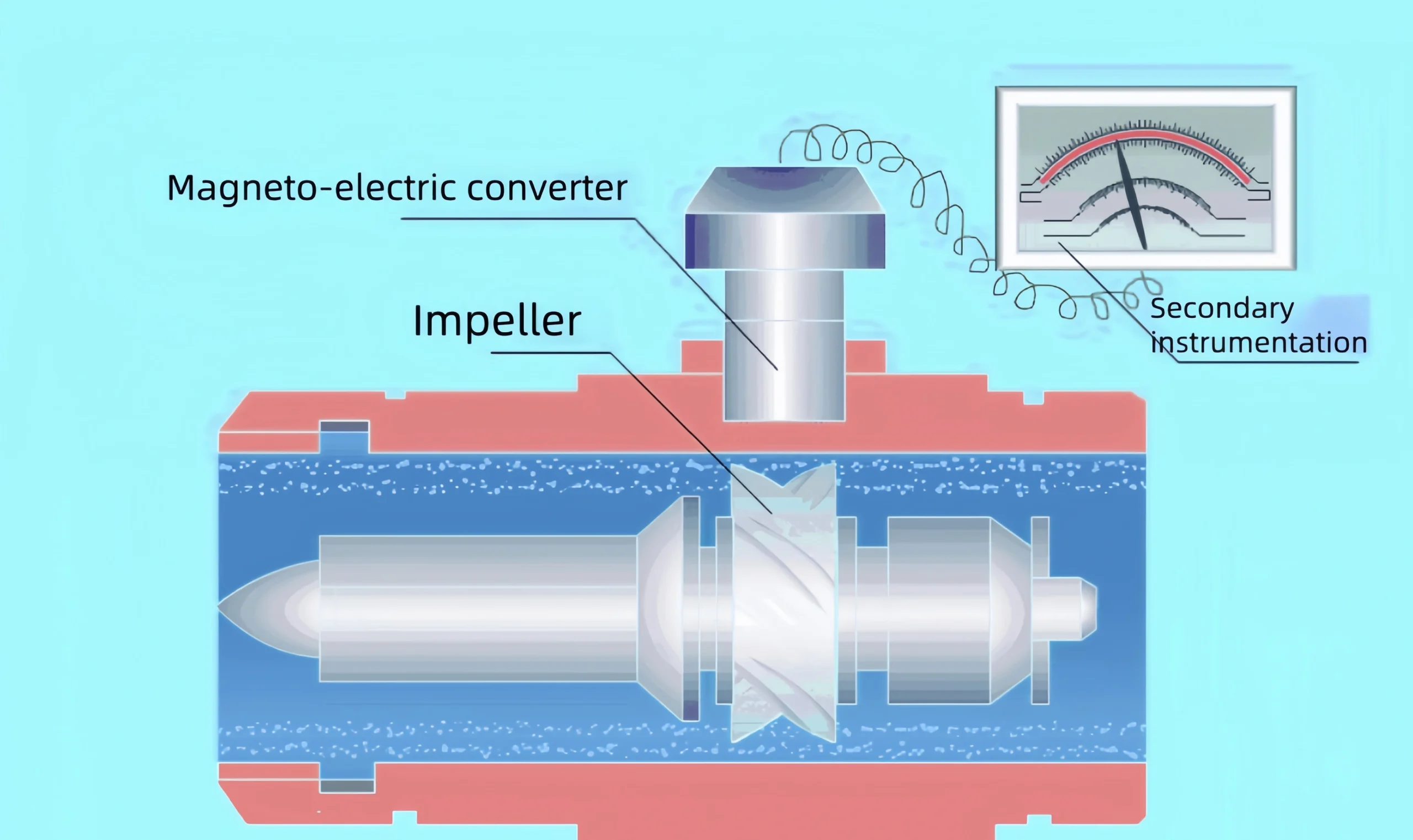
A Coriolis mass flow meter, also known as a Coriolis force mass flow meter. Its working principle is to let the 2 side-by-side U-tube lower ends of the bending part undergo a slight vibration, which leads to the straight tube part of the vibration, the two tubes at the same time separate or close together, that is, the vibration is synchronized.
At this time, if there is a gas flow through, the pipe will force the flow of gas or liquid to also vibrate together. And gas or liquid to resist this forced vibration will be in the direction of its flow to the pipe to exert a reaction force. This force is called the Coriolis force.
Under the action of the Coriolis force, the vibrations of the two pipes are not synchronized. There is a difference, through the circuit can detect the difference between the sizes. And this difference in the size of the gas through the pipeline mass flow rate is directly proportional to the size.
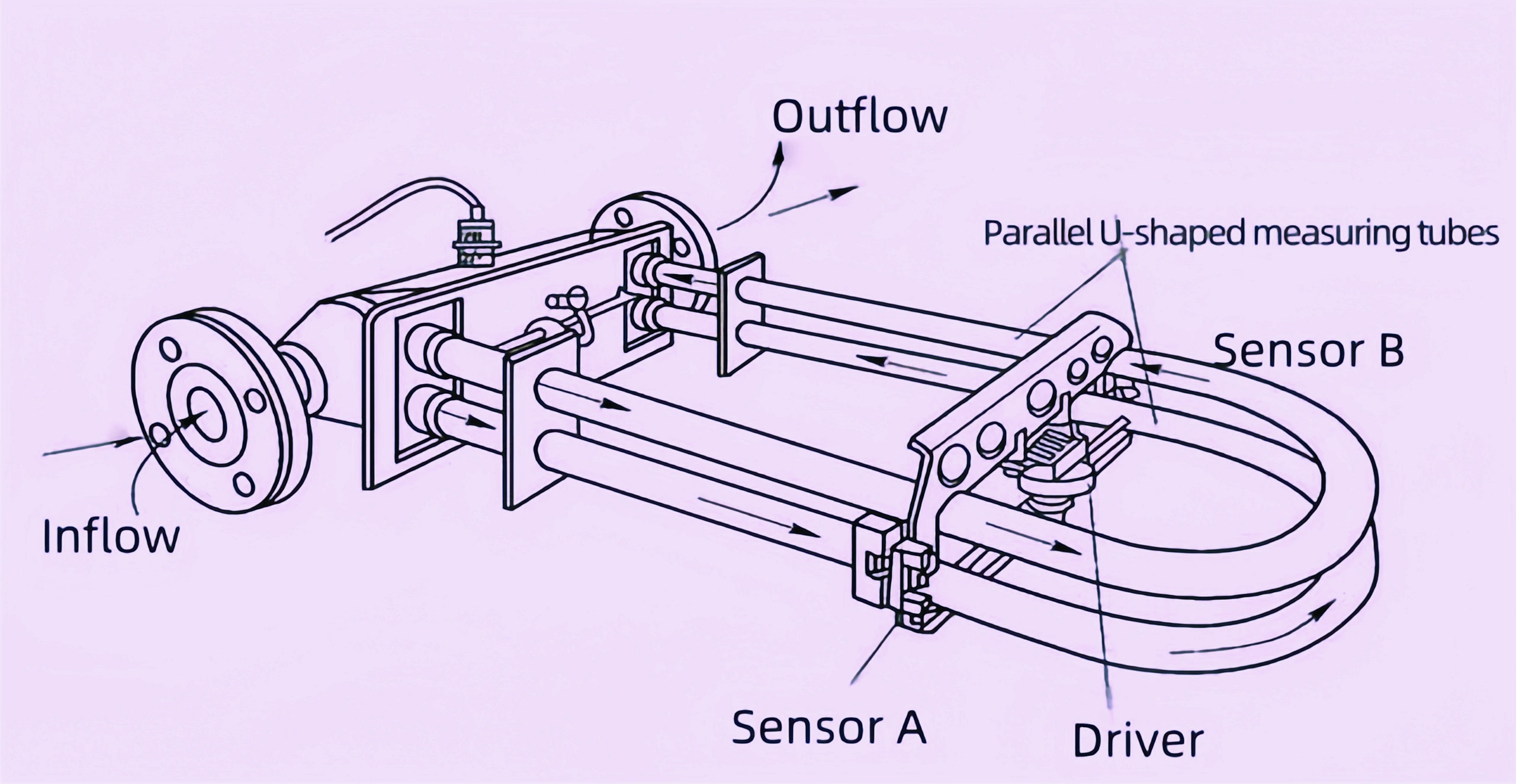
Different Media:
Turbine flow meters are mainly used in applications where the flow rate changes are small and the frequency of pulsating flow is low. According to the different measurement media, turbine flow meters have gas turbine flow meters and liquid turbine flow meters two kinds. Gas turbine flow meters are often used to measure clean gas in low and medium-pressure environments. A liquid turbine flow meter is mainly used to measure clean, low viscosity, and non-corrosive liquids. Media containing large amounts of impurities may cause wear and tear on the rotor.
Coriolis flow meters are mainly used for medium and high pressure, medium and small diameter flow measurement. Compressed natural gas (CNG) and liquefied natural gas (LNG), are being more applications. A Coriolis flow meter can adapt to a variety of fluids, including liquids, gases, slurries, and so on. However, they cannot measure gas-liquid two-phase flow due to errors caused by air vibration.
Different Installation:
Coriolis mass flow meter:
① If the sensors are used in series on the same pipeline, the mutual influence due to resonance should be house. And the distance between the sensors should be at least three times larger than the width of the sensor’s external dimensions.
② Installation location should pay attention to the process pipeline due to temperature changes caused by the expansion or deformation. And can not be installed in the process pipeline near the expansion joints.
③ away from the source of interference equipment at least 5m distance.
④ The sensor installation location should be so that the pipeline fluid is always. Ensures that the sensor measuring tube is full. And a certain holding pressure is required for the location to be at the low end of the pipeline.
Coriolis mass flow meter installation for different media
If the measured fluid is liquid, the general use of a shell downward horizontal installation of the sensor. Avoid the accumulation of air in the sensor vibration tube.
If the measured fluid is a gas, usually the shell is mounted horizontally with the sensor facing upwards. Prevent condensate from accumulating in the vibration tube of the sensor.
When the measured fluid is a mixture of liquid and solid slurry, it is more appropriate to mount the sensor on a vertical pipe, i.e., use the flag mounting method. This way to avoid particles accumulated in the sensor Koch force measurement tube,
However, compared to the first two horizontal installations, fixed will be relatively difficult. And the pressure loss will also be larger.
In short, the appropriate installation is to ensure the normal operation of the flow meter. play an important prerequisite for accurate measurement performance.
Turbine flow meter installation refers to: an overview turbine flow meter.
Different Accuracy:
The accuracy of a turbine flow meter is relatively poor compared to a Coriolis flow meter, usually around 0.5%-1%. However, Sino-Inst’s turbine flow meters can be customized to reach 0.2%. The accuracy of the turbine flow meter is easily affected by the change of medium.
The biggest advantage of the Coriolis mass flow meter is its accuracy. It has an accuracy of up to 0.1%. Since it measures mass flow directly, it is not affected by the temperature, pressure, viscosity and density of the medium.
Different Cost:
Turbine flow meters have a low upfront investment cost. But it requires regular maintenance and servicing later on, resulting in higher costs.
A Coriolis Mass Flow Meter has no internal parts to maintain, so maintenance costs are low. However, the initial purchase cost is very high.
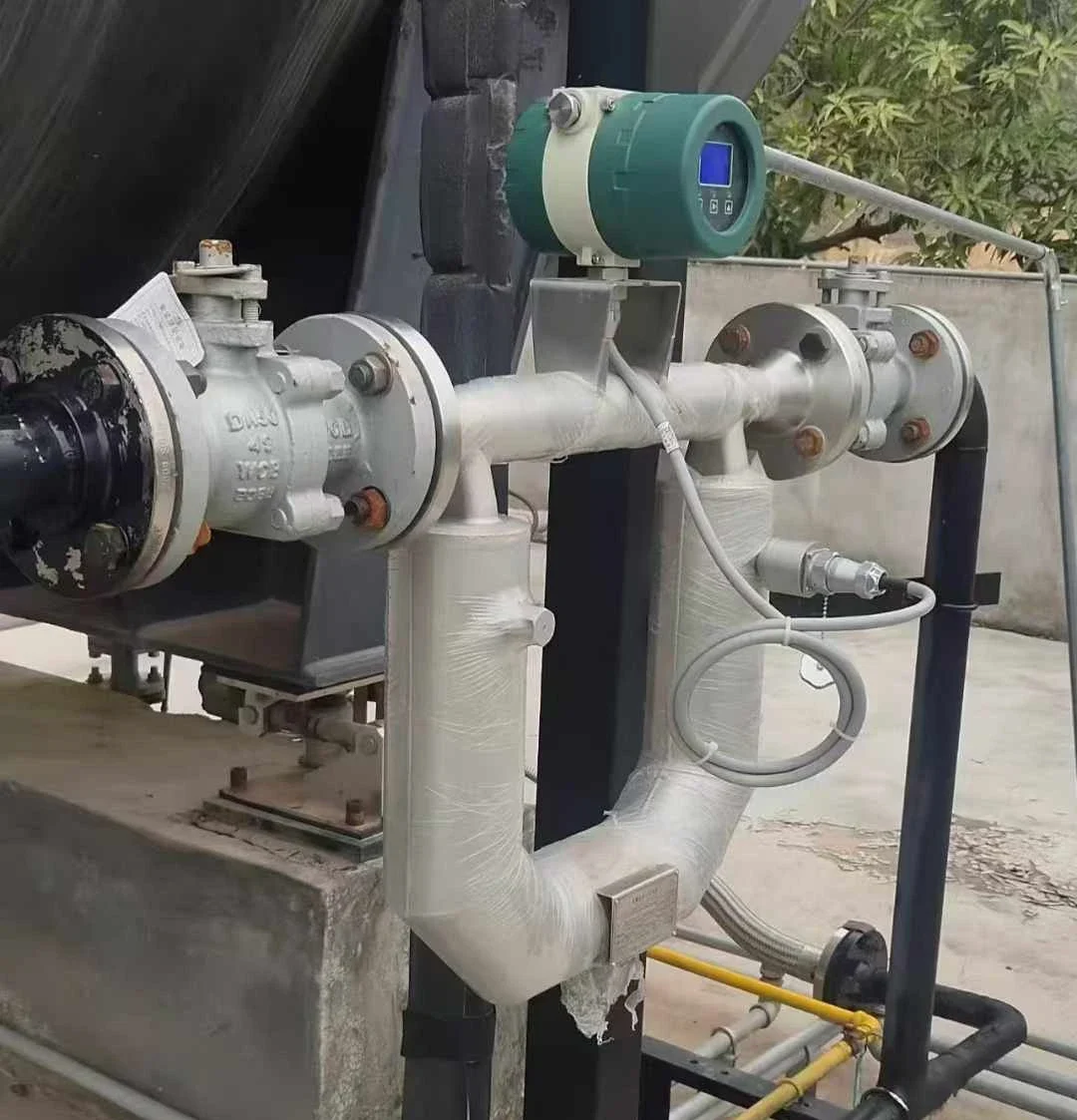
Choose Coriolis Mass Flow Meters or Turbine Flow Meters
In short, each type of flow meter has its own advantages and disadvantages. Based on Sino-Inst’s many years of experience, you can refer to the following suggestions:
Selection Dimension | Turbine Flow Meters | Coriolis Mass Flow Meters |
Budgetary considerations | Project budgets are very tight and initial investment is the primary consideration | Less sensitive to initial investment, more focused on long-term accuracy and stability value |
Applicable medium | Clean, well-lubricated liquids (such as diesel, lubricating oil, water); clean gas | Challenging fluids (slurries, viscous fluids such as syrups/chocolate, non-lubricating fluids, liquids with air bubbles); all types of liquids/gases that require high-precision metering |
Fluid Characterization Requirements | Stable and low viscosity | No special viscosity limitations, adaptable to fluids with frequent changes in viscosity, density and temperature |
Requirements for process conditions | Stable process (low temperature and pressure variations) or external compensation conditions are available | Adaptable to complex and fluctuating conditions without relying on stabilized process conditions |
Core Advantages | Low initial cost for routine clean media metering needs | 1. Extremely high accuracy, suitable for trade settlement, critical process control; 2. direct mass measurement without indirect conversion; 3. synchronized monitoring of fluid density and temperature; 4. low long-term maintenance requirements, reducing the risk of downtime |
Typical Application Scenarios | Gas station dispensers, chemical industry batch processing, water injection, cost-sensitive compressed natural gas (CNG) metering | Gas station dispensers, chemical industry batch processing, water injection, cost-sensitive compressed natural gas (CNG) metering |
What does a mass flow meter do?
Due to its extreme accuracy and great adaptability, mass flow meters are mainly used in the following applications:
Petroleum and Chemical Industry
For the measurement of crude oil, refined oil products, liquefied natural gas (LNG), liquefied petroleum gas (LPG) and bulk chemicals on both the buyer and seller side.
In chemical reactors, reactions are dependent on the mass of substances rather than their volume. Precise control of the feed ratios (proportioning/batching) of multiple reactants, especially expensive or hazardous chemicals, is key to product quality, safety and economic efficiency.
Precise control of the amount of additives, catalysts, colorants, etc., added to the main process ensures product properties and reduces costs.
Pharmaceutical & Biotech Industry
This is the area with the most stringent requirements for precision, hygiene and compliance.
Precisely control the mass flow of nutrients, acid-base modifiers and gases in culture-based bioreactors to provide an optimal environment for cell growth.
In pharmaceutical synthesis, precise control of the ratio of various APIs and solvents is directly related to the potency and safety of the drug.
Verify the amount and effectiveness of detergents and water in the cleaning process to meet the strict GMP (Good Manufacturing Practice) requirements.
Food & Beverage Industry
Accurately control the mixing ratios of syrups, flavors, juices, fats, oils, dairy products and other raw materials to ensure consistent product taste and quality.
Filling by mass is more accurate than filling by volume, especially for carbonated beverages (containing air bubbles) or viscous products (e.g., yogurt, ketchup), avoiding “shortages” or wastage due to changes in density.
Direct online measurement of product consistency, brix, alcohol content, etc., e.g. to monitor the solids content of milk, alcohol content of beer, etc.
Other important industrial areas
It is used to monitor fuel gas/oil consumption in boilers and burners to optimize combustion efficiency and control CO2 emissions.
Controlling the precise delivery of high-purity specialty gases (e.g., silane, helium) and corrosive gases (CVD process), a key component in the manufacture of chips.
Measuring the flow of mineral slurries, slurries, flotation agents, and chemical reagents for process control and cost accounting.
Various types of fluid dynamics and chemistry experiments where extreme accuracy and repeatability in the course of scientific experiments.
Why is mass flow so important?
Based on Sino-Inst’s many years of experience, the importance of the mass flow meter is reflected in the following aspects:
Its high measurement accuracy can accurately reflect the real-time situation of fluid flow, providing reliable data support for industrial production and scientific research. Its accuracy is virtually unaffected by changes in fluid temperature, pressure, density and viscosity. This is essential for trade settlement and critical process control.
It is also characterized by good stability and rapid response, and can work stably for a long time, responding to changes in fluid flow on time to ensure the stability and efficiency of the production process.
A mass flow meter in the measurement of mass flow at the same time, can synchronize the output of the fluid density and temperature values.
A mass flow meter can cope with a variety of complex working conditions. They can handle clean liquids to highly viscous fluids (e.g., asphalt, chocolate) and slurries.
Are turbine flow meters accurate?
Typically, turbine flow meters have an accuracy of between 0.5% and 1%. However, Sino-Inst can customize turbine flow meters to be as accurate as 0.2%.
If you want to buy a turbine flow meter or a Coriolis flow meter, please feel free to contact us. Our engineers will provide you with the most professional advice. Our flow meter types are complete and support customization, which can surely meet your measurement needs. We are a flow meter supplier from China, our products are of good quality and cheap, worth buying.

